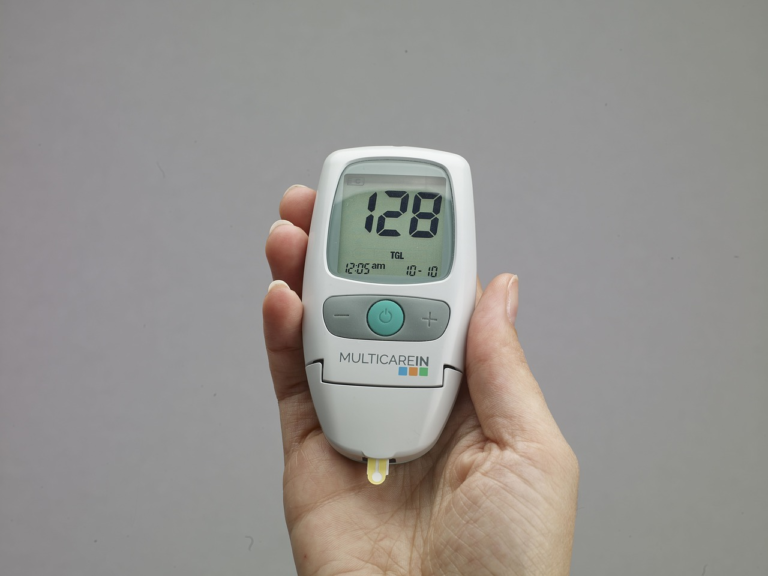Managing Your Medications: Understanding the Different Types Of Insulin For Better Control
#ez-toc-container {
background: #f9f9f9;
border: 1px solid #aaa;
border-radius: 4px;
-webkit-box-shadow: 0 1px 1px rgba(0, 0, 0, .05);
box-shadow: 0 1px 1px rgba(0, 0, 0, .05);
display: table;
margin-bottom: 1em;
padding: 10px 20px 10px 10px;
position: relative;
width: auto;
}
.ez-toc-container-direction {
direction: ltr;
}
.ez-toc-list-level-1 a{
font-weight:bold;
}
Table of Contents
1. Introduction to Insulin and Its Role in Diabetes Management
In the vast realm of endocrine health, insulin plays a paramount role, particularly in the context of diabetes management. Understanding insulin, its functions, and its importance is critical for both patients and healthcare professionals. This comprehensive overview dives into the essentials of insulin and highlights its pivotal role in controlling blood sugar levels.
What is Insulin?
Insulin is a hormone produced by the pancreas, specifically by the beta cells located within the islets of Langerhans. Functioning as a key regulator of glucose metabolism, insulin facilitates the uptake of glucose by body cells, thereby controlling blood sugar levels.
Without adequate insulin, or if the body cannot effectively use the insulin produced, glucose accumulates in the bloodstream, leading to hyperglycemia—an elevated blood sugar level. This is a hallmark of diabetes, a chronic condition impacting millions worldwide.
The Importance of Insulin in Controlling Blood Sugar Levels
- Glucose Regulation: Insulin promotes the absorption of glucose by liver, muscle, and fat cells, where it’s either converted into energy or stored for future use.
- Lipogenesis: This hormone stimulates the synthesis of fatty acids in the liver and ensures their storage in adipose tissues.
- Protein Synthesis: It plays an integral role in protein metabolism by promoting the uptake of amino acids and their conversion into proteins.
- Anabolic Effects: Insulin’s actions are largely anabolic, meaning they build up tissues and store energy, making it essential for overall tissue maintenance and energy management.
Given these vital roles, a deficiency or dysfunction in insulin can wreak havoc on the body, most prominently manifesting as diabetes.
Diabetes: A Closer Look
Diabetes is generally classified into two main types:
- Type 1 Diabetes: An autoimmune disease where the immune system erroneously targets and destroys insulin-producing beta cells in the pancreas. This destruction results in an absolute insulin deficiency, necessitating lifelong insulin therapy.
- Type 2 Diabetes: Often referred to as adult-onset diabetes, it’s characterized by insulin resistance, where body cells do not respond effectively to insulin. Over time, insulin production may also decline.
Both types lead to chronic hyperglycemia, with profound long-term complications if not managed properly.
Insulin Management in Diabetes Care
Effective insulin management is paramount for achieving optimal outcomes in diabetes care. Here’s how proper insulin management can enhance diabetes control and health outcomes:
- Glycemic Control: Maintaining blood glucose levels within target range minimizes the risk of acute diabetes symptoms and long-term complications. Insulin therapy, tailored to individual needs, helps achieve this goal.
- Prevention of Complications: Consistent insulin management reduces the likelihood of diabetes-related complications such as neuropathy, retinopathy, kidney damage, and cardiovascular diseases.
- Lifestyle Integration: Modern insulin regimens allow greater flexibility and integration into daily life, significantly improving quality of life for those with diabetes.
- Personalized Treatment Plans: Careful monitoring and adjustment of insulin doses, often in combination with other medications, allow for a tailored approach that addresses the unique needs of each individual.
Conclusion
The intricate dance of insulin and glucose metabolism underpins the management of diabetes, with accurate and effective insulin therapy standing as a cornerstone of treatment. By comprehending its significance and mastering effective management strategies, individuals with diabetes can lead healthier, more balanced lives, ensuring optimal short-term and long-term health outcomes. Understanding insulin’s role is the first step towards successful diabetes management.

2. Exploring the Different Types of Insulin
Understanding the different types of insulin is crucial for managing diabetes effectively. Each type of insulin is unique in its onset, peak time, and duration of action, tailored to meet various needs in controlling blood sugar levels. Below is an exploration of the various types of insulin, helping you or your loved ones make informed choices in diabetes care.
Types of Insulin
The types of insulin can be broadly categorized into:
- Rapid-Acting Insulin
- Short-Acting Insulin
- Intermediate-Acting Insulin
- Long-Acting Insulin
- Ultra-Long-Acting Insulin
Rapid-Acting Insulin
Rapid-acting insulin is designed to quickly reduce blood glucose levels. It mimics the natural insulin response of the body when food is consumed. Rapid-acting insulins are typically taken minutes before or after meals.
- Onset: Rapid-acting insulins take effect within 10 to 30 minutes.
- Peak Time: These insulins peak in one to three hours.
- Duration: They last for about three to five hours.
This type of insulin is particularly useful for controlling blood sugar spikes that occur during meals.
Short-Acting Insulin
Short-acting insulin, also known as regular insulin, is another option for managing blood sugar around meal times. It has a slightly slower onset compared to rapid-acting insulin.
- Onset: Short-acting insulin starts to work within 30 minutes to one hour.
- Peak Time: It peaks in two to five hours.
- Duration: The effects last for up to 12 hours.
This type of insulin is ideal for managing blood glucose with a more buffered approach compared to rapid-acting insulin.
Intermediate-Acting Insulin
Intermediate-acting insulin is primarily used to control blood sugar levels between meals and overnight. It works more slowly and for a longer duration compared to short-acting insulins.
- Onset: This insulin kicks in after one to two hours of injection.
- Peak Time: It peaks at around four to twelve hours.
- Duration: Lasting roughly 12 to 18 hours.
Intermediate-acting insulin is often used in combination with rapid or short-acting insulin to manage blood glucose levels effectively throughout the day and night.
Long-Acting Insulin
Long-acting insulins are used to maintain baseline insulin levels for an entire day. They provide a steady level of insulin and can help minimize the peaks and troughs experienced with shorter-acting insulins.
- Onset: This type of insulin begins its work after two hours.
- Peak Time: There is typically no pronounced peak, providing a consistent insulin level.
- Duration: Effects last for about 24 hours.
Often administered once or twice a day, long-acting insulin can improve overall glycemic control with a simplified dosage regimen.
Ultra-Long-Acting Insulin
Ultra-long-acting insulin is relatively new and provides an even longer duration of action than long-acting insulin. It is designed to have the most prolonged and stable effect.
- Onset: The onset of action is typically around six hours after injection.
- Peak Time: Ultra-long-acting insulins generally have no peak.
- Duration: They last for over 36 hours.
This type of insulin is beneficial for patients who prefer fewer injections and require a stable, continuous supply of insulin.
How Each Type Works in the Body
Once injected, each type of insulin works in a unique way to help manage glucose levels:
-
Rapid-Acting Insulin:
This type quickly absorbs into the bloodstream to exert its effects on blood sugar inspired by meal ingestion, swiftly lowering postprandial glucose spikes. It aligns with carbohydrate intake to ensure glucose from food is promptly used or stored.
-
Short-Acting Insulin:
With a slightly slower onset, short-acting insulin offers a controlled yet effective response to reducing blood glucose levels, aimed to be taken around mealtime to manage the gradual rise in blood sugar levels. It helps keep blood sugar levels steady until the effects of the intermediate or long-acting insulin kick in.
-
Intermediate-Acting Insulin:
By providing insulin between meals and throughout the night, this type builds a baseline for insulin needs. It complements mealtime insulin and covers insulin needs for about half a day or overnight, thereby playing a pivotal role in minimizing fasting glucose and managing nocturnal hypoglycemia.
-
Long-Acting Insulin:
Offering a stabilizing effect for up to a day, this insulin is pivotal for establishing a consistent insulin baseline. It works to maintain blood glucose levels without the pronounced peaks of shorter-acting insulins, serving as the backbone of diabetes therapy alongside meal-specific insulin.
-
Ultra-Long-Acting Insulin:
With its extended duration, this insulin type eliminates the highs and lows often associated with shorter-acting insulins. It’s ideal for individuals who prefer minimal doses, providing stable basal insulin coverage with reduced risk of nocturnal hypoglycemia.
For individuals managing diabetes, comprehending the characteristics and actions of each insulin type is essential for devising a personalized insulin regimen. With medical guidance, selecting the appropriate insulin regimen can significantly enhance blood sugar management, improve quality of life, and reduce diabetes-related complications.

3. Factors to Consider When Choosing Insulin Types
When it comes to managing diabetes, selecting the right type of insulin is a critical factor in maintaining optimal health. The variety of insulin types available today offers flexibility and personalization, but also necessitates thoughtful decision-making. In this segment, we’ll explore the essential factors to consider when choosing insulin, with a particular focus on lifestyle factors like diet and activity levels, and the importance of coordinating with healthcare providers for individualized care.
Consideration of Lifestyle Factors
Understanding how your lifestyle impacts your insulin needs is crucial in making the right choice. Here are some lifestyle considerations to keep in mind:
- Diet: Your eating habits greatly influence how your body processes insulin. A high-carb diet may require a different insulin strategy compared to a low-carb one.
- Physical Activity: Regular exercise can decrease insulin resistance and impact the amount and type of insulin you need.
- Daily Schedule: Frequent travelers or those with irregular work hours need flexible insulin plans to maintain glucose control.
- Sleep Patterns: Irregular sleep can impact insulin sensitivity, so choosing an insulin that accommodates your sleep schedule might be necessary.
Choosing Insulin Based on Dietary Needs
The type of food you consume can dictate the type of insulin that may be most effective for you. Here’s how diet plays a role:
- Carbohydrate Intake: A person consuming high amounts of carbohydrates might require fast-acting insulin to manage blood sugar spikes after meals.
- Low Carb or Ketogenic Diets: Those following these diets might benefit from long-acting insulins to maintain steady glucose levels.
- Meal Timing and Frequency: Irregular meal times or frequent snacks require insulins that are flexible in timing and dosage.
Choosing insulin that aligns with your dietary habits helps maintain better glucose control and reduces the risk of hypoglycemia or hyperglycemia.
Physical Activity and Insulin Management
Physical activity is another major consideration when choosing insulin. Exercise impacts insulin sensitivity and glucose metabolism:
- If you’re highly active, you may need less insulin due to increased insulin sensitivity.
- Different activities affect glucose levels in various ways. For example, aerobic exercises might lower blood sugar, while anaerobic exercises could raise it temporarily.
- Timing of exercise relative to insulin administration is key – exercising during the peak action of insulin can increase the risk of hypoglycemia.
By tailoring your insulin choices with these factors in mind, you ensure that your insulin therapy supports rather than hinders your active lifestyle.
Coordinating with Healthcare Providers
Beyond personal lifestyle factors, working closely with healthcare providers is crucial in selecting the appropriate insulin. Here’s why:
- Personalized Assessment: Healthcare providers can assess your overall health condition, diabetes type, and any comorbidities to recommend the best insulin options.
- Monitoring and Adjustment: Regular appointments allow for monitoring of glucose levels and making necessary adjustments to your insulin regimen.
- Education and Support: Providers offer education on how different insulins work, how to administer them properly, and provide ongoing support.
- Access to Resources: They can connect you with dietitians, diabetes educators, and other specialists who contribute to a holistic diabetes management plan.
Maintaining open communication with your healthcare team ensures that your insulin therapy is continuously optimized to meet your changing needs.
Benefits of Tailoring Insulin Therapy
A customized insulin plan offers several benefits:
- Improved Glycemic Control: Personalized plans help maintain blood glucose levels within target ranges, reducing complications.
- Higher Quality of Life: Flexibility in insulin administration can lead to fewer lifestyle disruptions and more freedom.
- Reduced Risk of Side Effects: Proper insulin matching minimizes the risk of hypoglycemia or hyperglycemia, leading to a safer diabetes management journey.
Overall, the goal is to achieve a balance that fits your daily life while maintaining effective diabetes management. By considering your unique lifestyle factors and working closely with healthcare providers, you can select the insulin type that best supports your individual needs.
4. Managing Your Medications: Tips for Effective Insulin Use
Managing your insulin properly is a crucial aspect of effective diabetes treatment. Ensuring that you are using insulin effectively involves understanding proper storage methods, handling techniques, and accurate administration. This guide will cover best practices for insulin storage and handling, as well as a step-by-step guide for administering insulin safely.
Best Practices for Insulin Storage and Handling
To maintain the efficacy of your insulin, it’s vital to follow recommended storage guidelines. Improper storage can lead to insulin degradation and reduced effectiveness. Here are some key tips:
- Room Temperature Storage: Once opened, most insulin vials and pens are safe at room temperature (59°F to 86°F) for up to 28 days. Check the manufacturer’s guidelines for specific products.
- Refrigeration: Unopened insulin should be stored in a refrigerator (36°F to 46°F). Do not freeze insulin, as freezing destroys its effectiveness.
- Avoid Direct Sunlight: Protect insulin from direct sunlight and high temperatures to prevent it from degrading.
- Check Expiry Dates: Always check the expiry date on the insulin packaging. Do not use expired insulin.
- Inspect for Changes: Before use, inspect your insulin for any changes in color or consistency, such as clumping or crystals; discard if such changes are noticed.
- Avoid Extreme Temperatures: Do not expose insulin to extreme heat or cold, such as leaving it in a car during hot or cold weather.
Step-by-Step Guide for Administering Insulin Safely and Accurately
Proper administration of insulin is essential for effective blood glucose management. Follow these steps for accurate and safe insulin injection:
- Gather Your Supplies: Ensure you have your insulin vial or pen, an alcohol swab, a syringe or pen needle, and a sharps container.
- Wash Your Hands: Clean your hands thoroughly with soap and water to minimize the risk of infection.
- Prepare the Injection Site: Choose an injection site such as the abdomen, thigh, buttocks, or upper arm. Clean the area with an alcohol swab and let it air dry.
- Check the Insulin: Ensure the insulin is the correct type and concentration. Inspect the vial or pen for expiration and clarity of solution.
- Mix the Insulin (If Needed): Some insulin types require gentle rolling to mix. Follow product instructions for mixing methods.
- Prepare the Syringe or Pen:
- For Vials: Draw air into the syringe equal to the insulin dose. Insert the needle into the vial and push air in. Turn the vial upside down and draw the insulin dose into the syringe.
- For Pens: Attach a new pen needle and prime the pen by dialing a minimal dose, then press to ensure insulin flows.
- Administer the Injection:
- Pinch the Skin: Gently pinch the skin at the injection site to create a fold.
- Insert the Needle: Insert the needle at a 90-degree angle (or 45-degree for slender bodies) into the pinched skin.
- Inject Insulin: Slowly push the syringe plunger or pen button to inject the insulin fully.
- Hold and Remove: Hold the needle in place for 5-10 seconds before removing it to ensure complete delivery.
- Dispose of Supplies Safely: Dispose of needles in a sharps container and follow local regulations for disposal.
- Rotate Sites: Change injection sites regularly to prevent lipodystrophy and ensure consistent absorption.
By adhering to these best practices for insulin storage, handling, and administration, you can help maintain the effectiveness of your insulin therapy and play a vital role in managing your diabetes efficiently.





